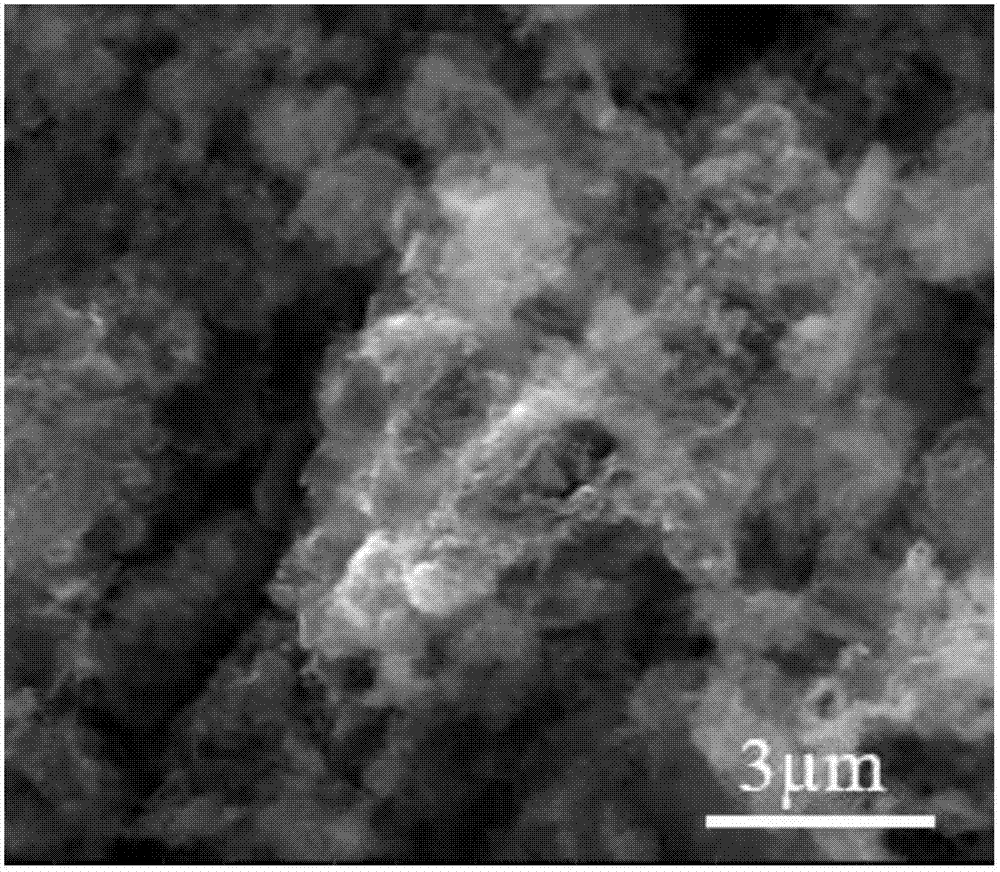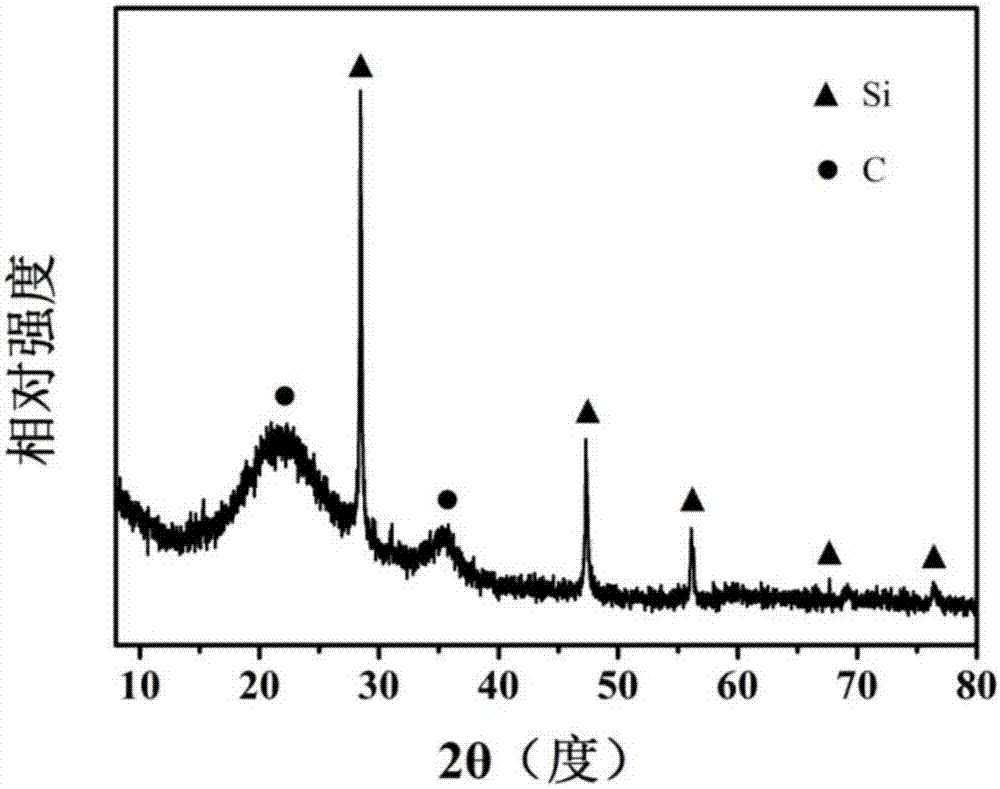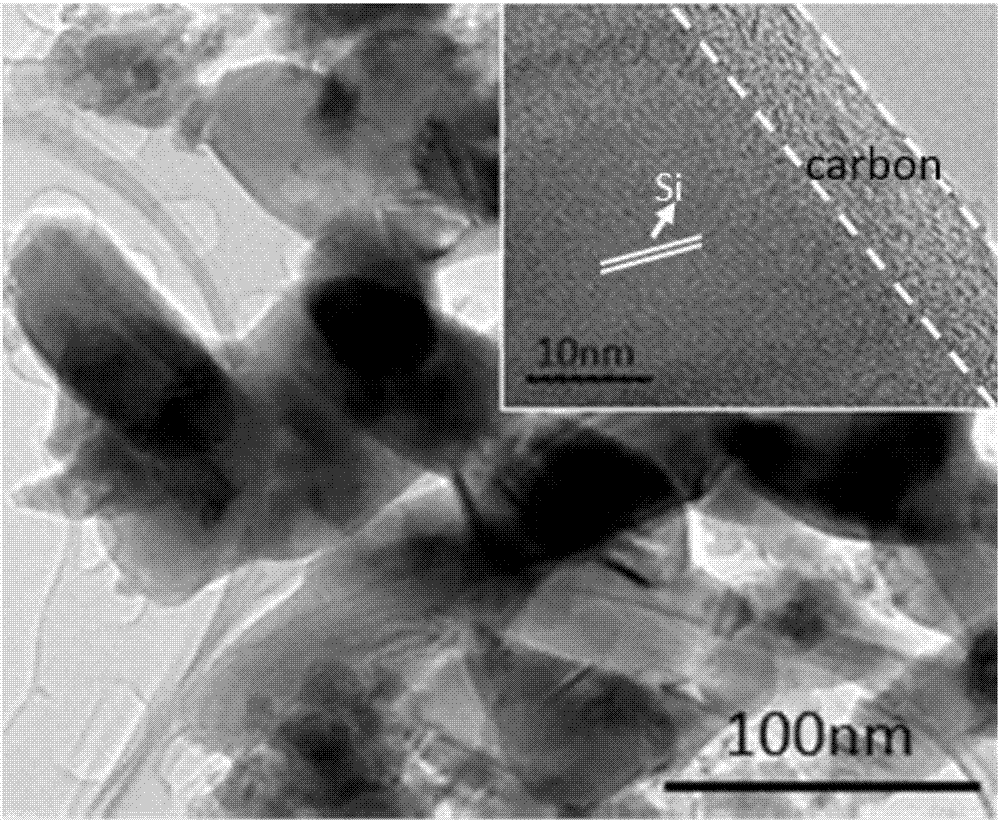Method for preparing silicon carbon composite material by taking silicate glass as raw material, product thereof and application
A technology of silicon-carbon composite materials and silicate glass, which is applied in nanotechnology for materials and surface science, electrical components, electrochemical generators, etc., can solve the problem of low volume energy density and mass energy density of silicon-carbon anode materials It cannot meet the application requirements of battery negative electrode materials, the preparation conditions of silicon carbon negative electrode materials are harsh, and the steps are complicated, etc., and achieve the effects of superior cycle stability, rich content, and low cost
- Summary
- Abstract
- Description
- Claims
- Application Information
AI Technical Summary
Problems solved by technology
Method used
Image
Examples
preparation example Construction
[0042] The preparation method of the silicon-carbon composite material provided by the invention comprises the following steps:
[0043] (1) After mixing silicate glass powder and carbon material, perform wet ball milling, filter and then dry to obtain a uniformly mixed mixture of silicate glass powder and different carbon materials.
[0044] In the present invention, the particle size range of the silicate glass powder is preferably 1-4 microns. The method for obtaining silicate glass powder is as follows: washing and drying the glass with deionized water, then reducing the particle size of the glass by mechanical ball milling, and then sieving with 1000 mesh to screen out the glass powder whose particle size meets the requirements. The silicate glass is sodium silicate glass or calcium silicate glass. The carbon material can be a carbon-containing organic compound or a one-dimensional carbon material, and the carbon-containing organic compound includes one or more of pitch,...
Embodiment 1
[0059] (1) put 1-4 micron glass and asphalt in a mass ratio of 10:3, use n-amyl alcohol as a ball milling agent, put them into an agate jar for mechanical ball milling for 8 hours, and obtain a mixture of glass and carbon-containing organic matter;
[0060] (2) After the mixture of glass and asphalt obtained in step (1) is hydraulically formed into an ingot under a pressure of 1 MPa, it is heated to 500°C for 2 hours at a heating rate of 2°C / min under an argon atmosphere, and then heated at a temperature of 5°C / min. The heating rate of min continues to be heated to 800°C for carbonization treatment;
[0061] (3) Grind the sample obtained in step (2) and mix it evenly with magnesium powder and molten salt according to the mass ratio of 1:0.5:3, and then hydraulically form an ingot under a pressure of 4 MPa;
[0062] (4) Put the sample ingot obtained in step (3) into a tube furnace filled with argon and heat it to 680° C. for 4 hours at a heating rate of 5° C. / min to obtain a re...
Embodiment 2
[0071] (1) Put 1-4 micron glass and asphalt in a mass ratio of 10:3, use n-amyl alcohol as a ball milling agent, put them into an agate jar for mechanical ball milling for 6 hours, and obtain a mixture of glass and asphalt;
[0072] (2) After the mixture of glass and asphalt obtained in step (1) is hydraulically formed into an ingot under a pressure of 1 MPa, it is heated to 550°C for 2 hours at a heating rate of 2°C / min under an argon atmosphere, and then heated at a temperature of 7°C / min. The heating rate of min continues to heat up to 850°C for carbonization treatment;
[0073] (3) Grind the sample obtained in step (2) and mix it uniformly with magnesium powder and molten salt according to the mass ratio of 1:0.5:4, and then hydraulically form an ingot under a pressure of 3MPa;
[0074] (4) Put the sample ingot obtained in step (3) into a tube furnace filled with argon and heat it to 700° C. for 3 hours at a heating rate of 5° C. / min to obtain a reacted mixture;
[0075] ...
PUM
| Property | Measurement | Unit |
|---|---|---|
| Tap density | aaaaa | aaaaa |
| Compaction density | aaaaa | aaaaa |
| Specific surface area | aaaaa | aaaaa |
Abstract
Description
Claims
Application Information
 Login to View More
Login to View More - R&D
- Intellectual Property
- Life Sciences
- Materials
- Tech Scout
- Unparalleled Data Quality
- Higher Quality Content
- 60% Fewer Hallucinations
Browse by: Latest US Patents, China's latest patents, Technical Efficacy Thesaurus, Application Domain, Technology Topic, Popular Technical Reports.
© 2025 PatSnap. All rights reserved.Legal|Privacy policy|Modern Slavery Act Transparency Statement|Sitemap|About US| Contact US: help@patsnap.com



